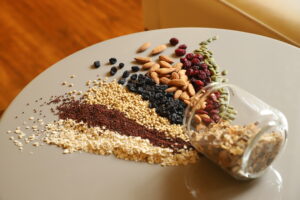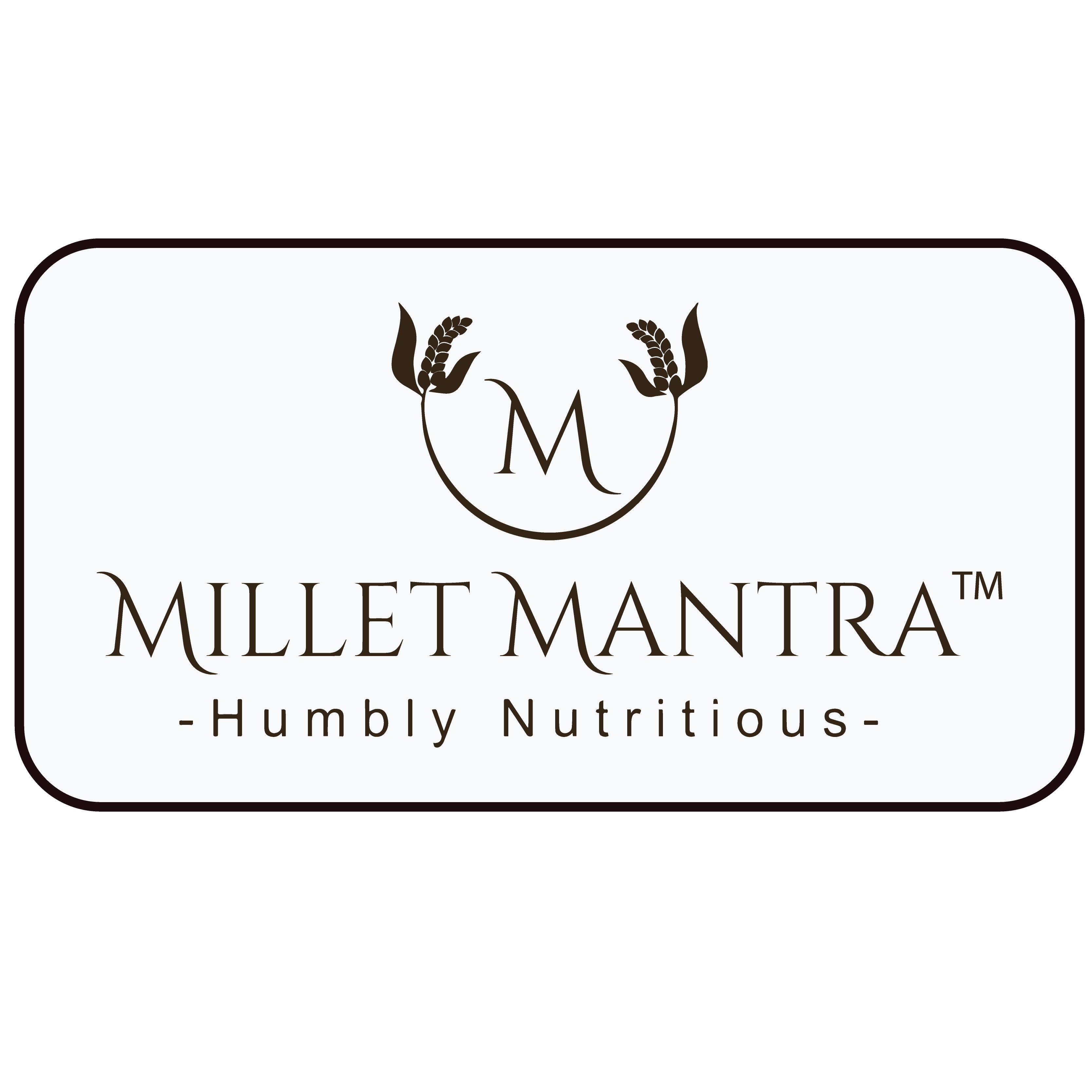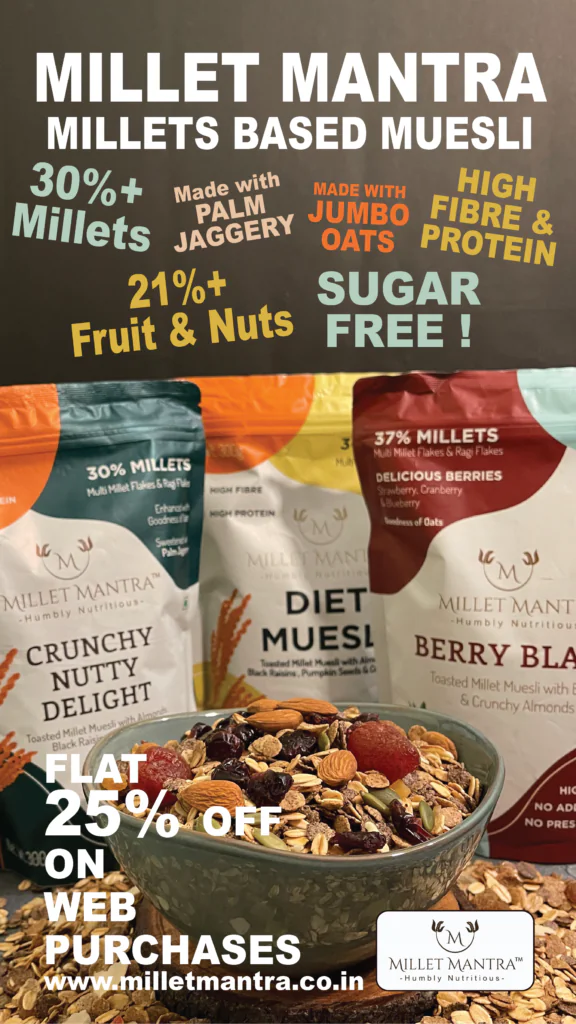A Guide To Millets
- Poojitha
- March 27, 2022
- 11:03 am
Table of Contents
Whole grains provide an absolute package of health benefits. They are completely different from refined grains- which lose valuable nutrients in the refining process. Every whole grain kernel contains three parts- the germ, the bran, and endosperm. They come as either ingredients in products or single foods. In the market, they have whole-grain versions of bread, rice, pasta, and flour. One example of whole grain is Millet.
What are Millets?

Millets are known as the powerhouse of nutrients. They boost your health and help in losing weight. They are cereal grains that belong to the grass or Poaceae family. Millets are gluten-free with high fiber and proteins that keep you full for long hours. They are in stock all year due to their cultivation across different seasons.
Talk to a fitness freak about his diet plan, and the first thing you will hear is millets. They have several health benefits that will help you in the long run. Millet is considered an ancient grain used for both livestock and human consumption. It is round in shape and grown in India and other Asian and African countries.
To grow millets, you require little ground fertility and water. This is why they are known as ‘poor man’s cereal’. Two broad categories of millets are-
-
Husked grains
This category of millets has an indigestible seed coat. One has to remove it before consumption. Earlier it was done by hand, but nowadays machines do all the processing work.
-
Naked Grains
Naked grains are those millets that do not have the indigestible husk. Processing is not required for these grains after the harvest. One can consume them after cleaning.
Nutritional Value
Millets are rich in carbs, and that is why they call it a starchy grain. It packs several minerals and vitamins that play a crucial role in keeping your bones healthy.
One cup of cooked millets include-
| Calories | 207 |
| Protein | 6.1gram (12% of Daily value) |
| Fiber | 2.3gram (9% of Daily value) |
| Fat | 1.7gram |
| Carbohydrates | 41.2gram (14% of Daily value) |
| Calcium | 5.2mg (1% of Daily value) |
| Iron | 1.1mg (6% of Daily value) |
| Niacin | 2.31mg (12% of Daily value) |
| Magnesium | 76.6mg (19% of Daily value) |
| Phosphorus | 174 mg (17% of Daily value) |
| Potassium | 108mg (3% of Daily value) |
| Folate | 8% of Daily value |
| Carbs | 41grams |
10 Different Types of Millets-
- Finger Millet
Finger millet is known as Ragi. Fitness enthusiasts use it as a healthy alternative to wheat and rice. Rich in amino acids and proteins, finger millet is a gluten-free variant of millet. It facilitates brain growth in growing children. It has high concentrations of iron and calcium and is known as a viable choice for losing weight. Ragi enhances the easy digestion of food and improves bowel movements.
-
Sorghum Millet
Sorghum millet is a popular millet all over India used in making bread and rotis. It is known as Jowar, rich in protein, iron, and fiber. Policosanols are present in it, and they help in lowering cholesterol levels. People who are allergic to wheat can have this as an alternative. Sorghum helps in increasing metabolism as it contains more antioxidants than pomegranates and blueberries.
-
Foxtail Millet
Foxtail millet is popularly known as Kakum or Kangni in India. It is available in rice flour or semolina. It has a high level of carbohydrates which help in maintaining blood sugar levels in the body. Kakum is a rich source of iron, and it helps improve overall immunity. It is a dry crop that takes up to 70 days to harvest. It is grown in Telangana, Rajasthan, Madhya Pradesh, and Uttar Pradesh.
-
Buckwheat Millet
Buckwheat millet is commonly known by the name Kuttu. People mostly eat it during the Navratri festival in India when they are fasting. Diabetic people can have it anytime. It helps in treating high blood pressure and maintaining good cardiovascular health. Those who want to reduce weight should add it to their daily diet. Kuttu also protects you from breast cancer, gallstones, and asthma.
-
Pearl Millet
Bajra or pearl millet is one of the common millets you see around. One can prepare it in different ways like- khichdi and roti. It includes fiber, protein, iron, and minerals such as calcium and magnesium. Due to this, it has an ample amount of health benefits. Bajra is the most harvested crop. It grows in shades of yellow, white, and gray. It is helpful for those having celiac disease.
-
Little Millet
Little millet is commonly known as kutki, shavan, moraiyo, and sama. It is loaded with minerals such as iron, zinc, calcium, potassium, and also vitamin B. It is mainly used in the Southern part of India in various traditional recipes. It does not encourage weight gain and you can have it in place of rice in your meal. The grains of little millet is small, so it takes less time to cook them.
-
Amaranth Millet
Everyone has heard about the amazing benefits of amaranth oats. Amaranth is a type of millet which is known as ramdana, chola and rajgira. It is a rich source of dietary fiber and protein- which makes it a healthy grain. People facing heavy hair fall or have grey hair can eat this millet as it helps fight these issues. It lowers high cholesterol levels and reduces the risk of cardiovascular disease.
-
Kodo Millet
Kodon or Kodo millet is a digestible grain with large amounts of lecithin amino acid. It strengthens the nervous system and is incredible for gluten-intolerant people. Kodo is a rich source of vitamin B and folic acid and also contains iron, calcium, magnesium, and potassium. Postmenopausal women can eat it regularly, as it will balance cholesterol levels.
-
Barnyard Millet
Barnyard millet is known as Sanwa and is a popular millet among others. It is loaded with high amounts of dietary fibers that help maintain bowel movements. It contains phosphorus and calcium, which strengthens the bones in your body.
-
Broomcorn Millet
Broomcorn millet is popularly known as Chena in parts of India. It helps balance sugar levels in the blood and has a low glycemic index. It is the most water-efficient cereal among others. People use it for dryland farming or as a summer rotation crop. Diabetic people can start having it in their daily diet.

